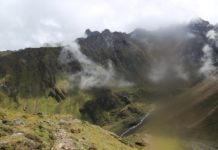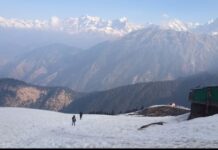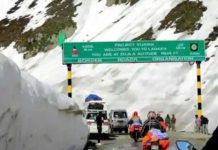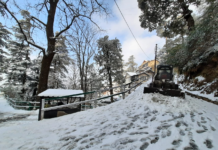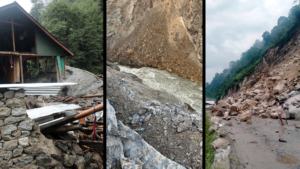
On July 28, at least seven people were killed, 17 injured and over 35 went missing after a cloudburst hit a remote village of Jammu and Kashmir.
Infact, the ensuing flashfloods have wreaked havoc in the Himalayas. Himachal Pradesh has been battered by rains and landslides for the past few weeks, claiming many lives and disruption of emergency services in the state.
Another video that has now gone viral on social media shows a stretch of road collapsing as a hillside crashes down in dramatic visuals of a landslide that took place in Himachal’s Sirmaur.
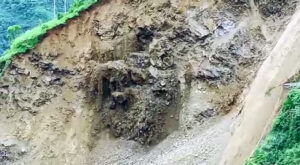
Recently, cloudbursts have been reported from several places in J&K, Union Territory of Ladakh, Uttarakhand and Himachal Pradesh.
Himachal has recorded 35 major landslides from June 13 — the onset of monsoon season in the state — till July 30, a pointer to the fragile ecology of the Himalayan region. Last year, 16 landslides were recorded across the hill state.
The tribal Lahaul-Spiti district, the worst hit this season with a total of 13 landslides and 11 instances of flashfloods, four of them triggered by cloudbursts, an unusual occurrence in the district which is a cold desert.
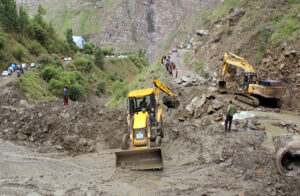
Reoccurrences of landslides and flashfloods in Himachal Pradesh this monsoon season have left the environmentalists and geological experts concerned.
A series of cloudbursts, flash floods and landslides have been reported from the Himalayas over the past few days.
Floods in Maharashtra and north Bihar, rockslides, and cloudbursts in Himachal Pradesh, excessive rainfall in Goa and Uttarakhand’s two districts all collectively indicate the increasing intensity of the extreme weather events across the Indian landscape.
Experts warn that we can no longer ignore the climate change footprint, as it is going to be a part of our daily routine. They say the monsoon rains would increase further with an increase in the global temperatures.
Climate change is leading to unpredictable weather extremes and their serious consequences.
A more chaotic monsoon season poses a threat to the agriculture and economy in the region and should be a wake-up call for policymakers to drastically cut greenhouse gas emissions worldwide.
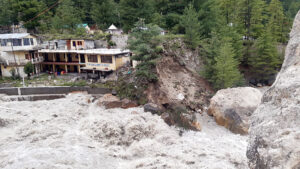
The citizens too need to be cautious of their actions, before and after a disaster strikes the Himalayan region.
According to experts, the deforestation and rapid urbanisation in the Western Ghats have led to the warming of atmosphere which, in turn, increases the capacity of air to hold moisture.
This leads to the formation of intense clouds or vertically developed clouds, bringing some incessant downpour over the region.
In the Himalayas, deforestation and continued construction of hydropower plants, roads, hotels or homes have led to the loosening of soil, resulting in frequent landslides even with the slightest of rains.
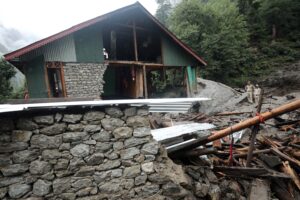
Further, with weather being more sensitive in hilly regions as mountains respond to weather more quickly, the development of clouds in the absence of strong upper air winds leads to these clouds getting trapped and not travelling far. Such clouds then deplete all the water over a certain area, leading to cloud bursts.
With various studies predicting more extremely wet years, the threat looms large over people’s well-being, economy, agriculture and food system.
Global warming is leading to a warming up of oceans and how the monsoon patterns are changing rapidly. The Indian subcontinent’s monsoon system has drastically changed due to global warming.
Himalaya is a fragile ecosystem. Let’s protect it before its too late.





